| Umělec magazine 2006/2 >> Sparks from the Interaction between Art and Politics in Zurich | List of all editions. | ||||||||||||
|
|||||||||||||
Sparks from the Interaction between Art and Politics in ZurichUmělec magazine 2006/201.02.2006 Dimitrina Sevova | u-sobě | en cs |
|||||||||||||
|
“When I was youn ger, I wanted to go fight with Che in the jungle, but now I’m just a standard leftie-liberal.”
Jenny Holzer 1 Chapter 1: Art & Politics – Thank you for your time Of the concepts that had emerged from the discursive practices of artistic and political activism of the 1960s and 1980s, many sound archaic (while others remain all the more acute and useful). Critical voices announce their inadequacy for anything but a historical documentation. They view the bombing and fracturing of the interrelation between concepts as a creative explosion unleashing opportunities for creating new social realities and utopian landscapes. These displaced perspectives, leaving the concepts in lesser defined states, and the terms floating, contain a hint of the performative character of the phenomena and processes mapped out in the leftist socially critical art, theory and activism of the past decade. Early this year on an icy January evening, the Shedhalle in Zurich gathered, despite its relative distance from the city center, an audience impressive in number and variety. Interested persons spanning several generations had come together to listen to the lecture “Art and Revolution. Art Activism in the Long 20th Century” by the Austrian philosopher and art theorist Gerald Raunig. This goes to prove that this type of question definitely continues to fascinate. Balancing a narrative of concrete and inspiring examples from history and the history of art with digressions into higher theory, the philosopher borrowed from Deleuze and Guattari the use of the concept of machines as the opposite of structures. He denied the usefulness of the notion of postmodernity and situated his arguments in the framework of a poststructuralist theory of revolution. Despite the expressed desire not only to move borders, but also to make them visible, he presented to the audience a fascinating masculine leftist agenda. Even as he held the “constitution” – following Negri and Hardt – against the macho rituals of the Revolution, even as he discussed how the very space in which an artistic process is happening carries hierarchies and went on to describe how the activists of the “VolxTheaterKarawane” went about deconstructing these, he did not bend the privileged position of the discursive framework of his lecture, nor take a step aside and attempt a link to feminist theory, knowledge and revolutionary artistic practices. A choice that could have seemed obvious in view of the context and history of Shedhalle as an exhibition space and archive in which this type of politics, theory, research and practices have been developed for many years. Once more, even in the context of careful and socially aware analysis, we are faced with exclusion – feminist artists who, without necessarily calling for a revolution on the political scene, went about revolutionizing artistic expression and aesthetics. As a starting point the lecturer could have used at least the undisputed contribution of women in the field of psychoanalysis to that poststructuralist reading of the relations between revolution, art and artistic activism so favored by him in his presentation. What’s more, he could have made bolder and more fluid suggestions that could have challenged the monolithic nature of the polar opposites (whether men and women or art and revolution), and offered a more encompassing position and contemporary language. With Jean Tinguely, we could say: “Art is revolution. Revolution is art.” From this point of view, a supposed debate at Shedhalle at the time of the lecture did not take place, although a new field of potential discussion was opened by a small remark by one of the curators of the space, Katharina Schlieben, on how language is used differently by activist artists and artist activists, which makes communication between them difficult – a difficulty they had come across in a public symposium as part of their project Colonialism without Colonies? Relationships between Tourism, Neocolonialism, and Migration, exploring (touristic) productions of space and images against the backdrop of a multidimensional colonial matrix. Undoubtedly fruitful is the desire of the two curators Katharina Schlieben and Soenke Gau to maintain the “old” radical fame of Shedhalle as a display of innovative, critical and young art and at the same time to develop strategies of resistance, in order to prevent Shedhalle turning into something like the conservator of its own myth, into a political or cultural amusement park. In a time when revolutionary signs and codes are appropriated by commercial strategies, any subversive position must be on the move. They rose to their own challenge with their first project already, in which they raised the question: “Spectacle, Pleasure Principle or the Carnivalesque?” Their point of departure being a re-reading of Mikhail Bakhtin’s writings on literature and carnival, and an attempt to make his theses useful for concrete political and artistic work while picking up the lead from the history of Shedhalle itself, and of political and artistic practices in Zurich. If now Shedhalle with its self-critical stance occupies a niche among the various types of institutions, offering its space for specific artistic and curatorial practices relating to political, social and aesthetic questions and their interactions, in the context of its history one can come across many of the paradoxical points linked to the change of paradigm in the socially critical discourses. Critique is not Enough, as the title of a 2003 project in Shedhalle says. Shedhalle is part of the Red Factory – an abandoned silk factory along the lake somewhat outside the city –, obtained in the 1980s in the course of the youths uprising, which had started out with a protest against a 60-million grant to the opera house, when no funding or spaces were available for autonomous culture outside of the regime of commerciality. Correspondingly, the Shedhalle archive makes numerous references to the 80s and the political struggles for non-commercial artistic and other cultural spaces. One of the VHS tapes preserved there is an authentic copy of a 1980 television discussion that became famous as the “Müller-Sendung” (or Müller Show). It exemplifies a technique sometimes called “subversive affirmation” that has since also been used by the globally networked antiglobalist mobilizations of the end of the 1990s. A technique that provides the possibility of escaping from a situation in which your voice, your arguments have no chance of being heard, due to the structure of the space and the speakers’ positions. The concept can be useful in the analysis of artistic practices that have emerged from the interaction between politics and art after the sudden inflow of digital technologies and changes in the economic conditions. Media presence is a two-edged sword. This was realized by the youth movement of the 80s when they were invited to a television round-table discussion to converse with local celebrities and politicians about the violence on the street. Typically, when the reporting does not depict you in the third person as a looting horde, on the rare occasions that you’ll be given the opportunity to speak for yourself, you’ll be pulled into the game of “constructive dialog,” in which you either play along and adopt a moderate position anticipating the next compromise, or you expose yourself as an “extremist” with whom dialog is plainly impossible. Two representatives of “The Movement” appeared in the TV studio as “Mr. and Mrs. Müller,” a married couple of the narrow-minded petite bourgeoisie. Instead of defending the uprising on the street, they demanded strict measures to be taken against the revolting youths, escalating their demands until they culminated in the call for the death penalty for demonstrators. Their performance completely undermined the strategy of the invited politicians and other “moderates,” who could not deal with the unforeseen distribution of roles. Their articulate rhetorical style allowed them again and again to change the position from which they spoke, and to avoid being pinned down to their expected role as representatives of the movement, and brought back in line with constructive dialog. In their intellectual, political and aesthetic efforts rooted in a political awakening and sense of responsibility, feminist artists did not hesitate to open Pandora’s box, and in dealing with what jumped out they built into their artistic practices tactics that were everything but artistic – the use of irony, interventions in the space including the appropriation of the dominant language of the mass media, trivial and commercial images, clichés in order to undermine the stereotypes of gender, race and class. From the intersections and interactions between feminist practices, globalized antiglobalist mobilizations and political-correctness movement the new critical artistic practices of the 1990s arose, formulated out of a language and sign space colonized by the mass media and the spectacle and the spectacular rise of digital technologies. The idea arises that art has no value of its own, but is part of a social process and cultural practices of individual and collective identifications, and needs to be viewed in this context. The art & politics practices at the beginning of the 21st century are integrated in the art system, but they are not. They work with reality, create reality. They breed meaning, crossing points, create all sorts of hybrid networks and flows. They are unexpected, unpredictable, undefined, fascinating. They skillfully avoid the systems of control or subvert them, rhysomatically growing utopian moments, using different interfaces and tools, shifting perspectives. RELAX (chiarenza & hauser & co) occupy a special place in the history of the interaction between politics and art, both on the local and on the international global art scene. They started working as a collective in the squats of Paris in the first half of the wild and rebellious 1980s, and then in 1997 adapt the anonymous name RELAX with its multiple meanings reaching out into other spheres outside of art. Announcing “art as idea as service,” RELAX make use of a broadened space, opened up by the new economic phenomena in the highly developed countries, and the tremendous growth of the service sector, carefully researching and reflecting the social, political and economic roots of a consumers’ culture and the commercialization of all spheres of contemporary life in the high-tech societies. Since 1997 RELAX have resolutely renamed all public places as “economic spaces.” Developing the idea of public art or even taking part in certain aspects of cultural politics by taking on commissions from the state, with more than ten projects they get involved in a public arena of ‘social progress.’ To make the link and comparison between the truisms of RELAX and those of the American artist Jenny Holzer seems only natural. Besides the fact that they make their appearance on the art scene around the same time, they also draw their political and aesthetic arguments from similar discursive contexts, and develop similarly inventive methods of direct communication so that their message reaches a broad audience not only visually, but also textually. To this end RELAX and Holzer use populist tactics for spreading their text messages, combined with a growing interest in public and commercial places and spaces, including T-shirts and other objects used by advertising to place its own messages. With both RELAX and Holzer the confusion comes from the fact that they speak from multiple positions in their messages. They operate both with social messages that are clearly recognizable as belonging to the leftist political space (e.g., “artists are no flags,” from the project Goldfinger, RELAX, Winnipeg, 1993) and with others that fit more into the aesthetics of the neoliberal business strategies, messages that indicate a right-wing political framework (e.g. “the name of the game is MONEY,” from the project Thank You, RELAX, San Francisco, 1994, where the famous disposable cup makes its first appearance with the message: “you pay but you don’t agree with the price”). They undermine the original meaning of the codes of the textual message in order to use them for their own needs, placing them in a broad social context. How do you create a local context outside the control of the market, and outside the shadow of the institutions? Through active interaction, by romantically crossing the border between art and life, propose Cream. They are not so much an artists’ group, but rather a network between eight women, and the expression of their individual and collective interaction at the crossing points between themselves, art and cultural activism. Inspired by their unfolding collaboration, exploring how society deals with identity politics, in their projects they can follow this type of indirect knowledge, underground knowledge or politics emerging from the chaos at the interstices between the mainstream scene and subculture. They turned out to be among the freshest social actors on the local art scene: “Pleasure is the basis for the engagement of Cream.” (Cream about Cream) They reestablish the place of the viewer, true to the idea that the visual culture of the audience is far richer than its artistic culture. They gather experience from the queer scene and create some other context. The aim is not to produce one’s own artistic work, but to bring together cultural producers with a broader fan base. Cream take different approaches depending on the project at hand, play with the codes, often use humor, irony, parody, the comical. One of their inspiring invitations was to a party in a private apartment with the funky idea to show artistic films about the police – Police Film Night. Two of the films screened were: Piss Police by the artists’ collective Sexismus Productions follows an action in the urban space, where, dressed up as women supercops, they are hunting men who think they can urinate freely in the streets of Zurich. Sexismus Productions take their name to heart. With their interventions in public and media space they turn sexism around against its usual source – men: “We told them we didn’t believe in art, that we believed in attractive sexism.” With a touch of irony, they do not preach an anti-sexist position but rather, exchanging the speakers’ positions and the expected social roles, they create situations in which the process of legitimizing sexism becomes transparent. And the first public screening of Tim Zulauf’s video film East Police. Eat ID – which puts into relation narrative, fictional and documentary strategies in artistic film production. In his research for his theater play “Migrantenstadl” he spent time with migrants in a transit center – in which he shot, with them, this short film. In these discussions, a recurring point made by migrants was that in the process of their application for asylum they keep having to play themselves, to imitate themselves, to revisit the story of their life as it is constantly put in question by the authorities. The film raises in an accessible way questions around gender, migration and identity. At the center of attention, the video installation Casual – Queering Idols by CASUAL (Sabina Baumann & Karin Michalski) grabs the eye among the projects presented in the exhibition Exotic of the Real – On the ambivalent reference to reality, Kunsthalle Zurich (December 13-23, 2005), curated by Ursula Biemann in collaboration with Eve Bhend. Casual – Queering Idols appeals with its sprouting of political responsibility all the way into established art spaces. It consists of a video film with 12 interviews – no glamour, in an artificially created surrounding on a green and neutral background – and a wall with three posters which on a pink background display a constellation of graphic drawings presented in chaotic fashion – outside any historical or any other hierarchy – portraits of "queer idols" from David Bowie to Judith Butler, from Audre Lorde to Missy Elliot, from Hothead Paisan to Yoko Ono, from Simone de Beauvoir to Madonna. Despite this squad of celebrities with destabilized gender identity, the world remains dualistic. For CASUAL it is key to avoid taking an ethnographic view on their interview partners, to portray them not as objects of the discussion, as "persons affected" by heteronormative attributions, but rather as "experts" – experts either because they professionally deal with gender constructions or because they are forced to deal with the categorization of gender and sexuality on a daily basis. Their interest lies in the ways in which attributions are being repeated and stabilized in everyday situations, and in the ways in which their seeming self-evidence can be challenged, and what role specific spaces and social groups play in individual strategies of gender subversion. Chapter 2: Art & Politics – I heard it through the grapevine 3 In order to understand more on the nature of the interconnected, critical and fascinating contemporary art practices, we need to glance at the exhibition spaces for contemporary art with their overlapping communities in Zurich. To analyze the nature of sustainable communities connected by self-organized and self-funded spaces. They form an innovative position of aesthetic resistance expressing itself in tactics and ideas for survival, i.e., a practice of micro-communities that provide you with opportunities to participate in the art scene outside the taste of the middle-class consumer. These nodes are not political by design, nor do they deal with theory. Nonetheless their practices intuitively reflect social and critical issues. Zurich saw the dawn of Dada, the first global yet locally active artistic-political movement, which discovered the strength of an artistic expression emerging from the crossing points between art and everyday life, between the political and the mainstream, where social, political and artistic desires meet in the form of a provocative spectacle or just a game and fun at the “Cabaret Voltaire.” Their practices later find their way into the squats of the 1960s and 1980s. Today they can be found in the peculiar, cool and in exhibition spaces, where through more texture, fun and pleasure the space is extended beyond its role of exhibiting artistic works, and all possibilities remain open. They are interlinked via a web of buzzing grapevine – information traveling in no time from ear to ear. “Dreams can be lived. i want to make exhibitions and art, have community and realize my ideas, be independent and nonetheless integrated and sheltered in the social network,” writes Esther Eppstein 1997 in her introductory text to a book presenting her own exhibition space – Message Salon (pronounced in French, the name creates an allusion with massage salon). Message Salon has survived over the years and remained a meeting point for untamed artists and related subcultures. Esther Eppstein is a veteran in this special field of creating social links between art and the cultural-political scene. The exhibition space becomes an expression of her own art, and the link to post-punk raises the critical spirits. K3 is a truly fashionable place in Zurich’s art scene. Sometimes at openings the place is so packed that you’ll be lucky if you manage to gain access to the bar, or to make your way through the rooms to see the exhibition itself, or its visitors. The K3 team – Clare Goodwin, Sandi Paucic, Oliver Kielmayer – do not declare a given political program, which should in no way be understood as meaning that from this provocative vagueness a specific profile and character of their own would not emerge. The exotic charm of a quite British atmosphere befits their single publicized goal – the establishment of direct relations between the British contemporary art scene with its underground artistic clandestinity, and the local artistic context. K3 is open both to established figures with a fresh face from the international art scene, and as yet not famous, unburdened, debutants or just appropriators and exhibitors of other people’s dilettante artistic works, chicken on the grill and other delicious mouthfuls. Studio, but also exhibition space in which any DJ party or even just drink party creates as much artistic context as any other representation of art or discursive practice. The space can go from a white cube through various functional and anti-functional transformations, with the support of old and new technologies. It is located in a former gear factory on the Maag premises at the end of "City District 5," a thriving urban area marked by an accelerated process of appropriation of old industrial buildings and spaces and their adaptation to spectacular commercial projects, gigantic entertainment spaces or luxurious offices. The forced gentrification in which the urban environment falls under the control of a fast-changing economy of highly developed capitalist type, along with the chic lofts make it a living place of choice for a middle class of artistic and intellectual bohemia. The different and clever approach of K3 on the background of the urban reality raises hopes that it may be possible to maintain an independent, specific and resistant culture and identity in such a surrounding. According to the information arriving through the buzzing grapevine networks in the city, in the local art scene it is Les Complices* that emerges as the absolutely most appropriate space for contemporary art at the moment. Especially after they celebrated their 3.3-rd anniversary with a resounding, spectacular party at the in squat on Ruedigerstrasse, which surpassed even the most daring expectations, offering to the players of the art scene the pleasure of flirting with the audience with their very own charity go-go dance around the pole. The conspiratorial French name “Les Complices*” is similarly ambiguous to the English “Accomplices” and can mean either a group of people committing a crime together, or plainly close friends. Additionally, in a German-language city like Zurich the French name operates a kind of displacement. This innovative and contemporary space outside the artistic comfort of the white cube is located in the not yet gentrified “City District 4” where the politics of cooperation and interaction between the social and the artistic, and their reflection in artistic practices, appear naturally. Artistic and urban geography work in an active exchange. Almost at the center, while still bearing the characteristic coziness of the old neighborhoods, this part of the city has yet to be swallowed by investors – an urban environment defined by the specific reunion of creativity and decay. Designer and architect offices alternate with the red curtains of the sex workers’ offices; the market sometimes happens right on the street. In this neighborhood, sometimes this motley crowd of migrants, creative and self-organized art workers and other inhabitants when the need arises demonstrate among themselves true neighborly tolerance and solidarity. We can look at the work of Les Com-plices* (initiated in 2002 by Jean-Claude Freymond-Guth, and run since 2004 in collaboration with Andrea Thal) as an artistic project of a team of two artists, beyond the traditional understanding of art – where all becomes art. With a non-essential approach, playing the card of the ostensibly small projects they drive little holes in the artistic and social reality, which would not be possible in a commercial environment. The space offers a monthly exhibition, a weekly bar, theoretical discussions, presentations, the Diaspora Soul Food series which presents real culinary and artistic pleasures from migrant artists, where the aim is to encourage an artistic debate while avoiding the label of an artist with a specific national identity, but at the same time to allow discussion of the constitutive forces of one’s identity. With a few minimalist but savvy projects making maximum use of the contexts and interactions, they have succeeded in attracting a local art community and mapping out the links and relations between the players. 1 Quoted in John Howell, “The Message is the Medium,” ARTnews 87, 6 (Summer 1988): 124. Here from Jenni Drozdek, "Looking to the Left: Politics in the Art of Barbara Kruger and Jenny Holzer", in: Kritikos, Vol. 3, February 2006 2 Message by RELAX (chiarenza & hauser & co), 1995. 3 1967 R&B number one hit by Marvin Gaye. Cf.
01.02.2006
Recommended articles
|
|||||||||||||
|
04.02.2020 10:17
Letošní 50. ročník Art Basel přilákal celkem 93 000 návštěvníků a sběratelů z 80 zemí světa. 290 prémiových galerií představilo umělecká díla od počátku 20. století až po současnost. Hlavní sektor přehlídky, tradičně v prvním patře výstavního prostoru, představil 232 předních galerií z celého světa nabízející umění nejvyšší kvality. Veletrh ukázal vzestupný trend prodeje prostřednictvím galerií jak soukromým sbírkám, tak i institucím. Kromě hlavního veletrhu stály za návštěvu i ty přidružené: Volta, Liste a Photo Basel, k tomu doprovodné programy a výstavy v místních institucích, které kvalitou daleko přesahují hranice města tj. Kunsthalle Basel, Kunstmuseum, Tinguely muzeum nebo Fondation Beyeler.
|







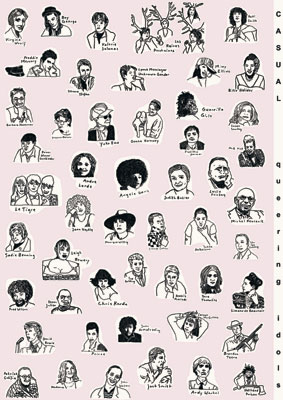





















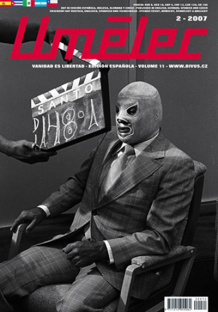




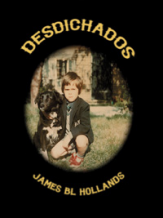
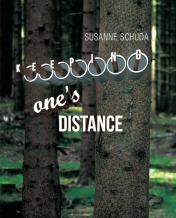
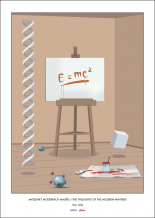
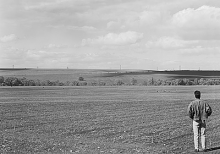


 New book by I.M.Jirous in English at our online bookshop.
New book by I.M.Jirous in English at our online bookshop.
Comments
There are currently no comments.Add new comment